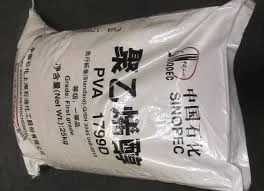Understanding HPMC Grade A Comprehensive Guide
Hydroxypropyl Methylcellulose (HPMC) is a water-soluble polymer derived from cellulose. It has become an essential component in various industries, including pharmaceuticals, food, cosmetics, and construction. One of the critical aspects of HPMC is its grade, which determines its properties and applications. Understanding HPMC grades is essential for anyone involved in formulation and manufacturing processes.
What is HPMC?
HPMC is synthesized through the etherification of cellulose with propylene oxide and methyl chloride. This results in a compound that possesses unique abilities, such as rheology modification, thickening, and film-forming properties. HPMC is non-toxic, biodegradable, and can be produced in various grades, each suited for specific applications.
The Significance of HPMC Grades
HPMC is categorized into several grades based on various factors such as viscosity, gel temperature, and methoxy and hydroxypropyl content. These classifications help manufacturers select the right type of HPMC for their particular needs. The grade of HPMC influences its solubility, swelling behavior, and viscosity, which are crucial parameters in formulation.
1. Viscosity HPMC grades can vary widely in viscosity, typically ranging from low (<500 cPs) to high (>100,000 cPs) levels. Higher viscosity grades are generally used in applications requiring thicker textures, such as adhesives and paints. Conversely, lower viscosity grades are preferred for applications like drug formulations, where smoother solutions are essential.
2. Gel Temperature The gel temperature indicates the transition point where HPMC begins to thicken and form a gel. Different grades of HPMC have varying gel temperatures, making it critical for formulators to select the appropriate grade based on the application's thermal requirements. For example, HPMC with a lower gel temperature might be ideal for cold applications, while those with higher gel temperatures are suitable for heat-processed products.
hpmc grade

3. Methoxy and Hydroxypropyl Content The ratio of methoxy and hydroxypropyl groups in HPMC affects its solubility and film-forming capabilities. Higher methoxy content generally leads to better water solubility, while increased hydroxypropyl content enhances the polymer’s ability to form films. This balance is crucial, especially in pharmaceutical formulations, where bioavailability is paramount.
Applications of HPMC Grades
1. Pharmaceuticals HPMC is extensively used in tablet formulations as a binder, coating agent, and controlled-release polymer. Its non-toxic nature and tailored viscosity properties make it suitable for various drug delivery systems.
2. Food Industry In food processing, HPMC acts as a thickening agent, emulsifier, and stabilizer. Its ability to maintain texture and improve shelf life makes it a popular choice in sauces, dressings, and processed foods.
3. Cosmetics Many cosmetic products utilize HPMC for its film-forming and thickening properties. It can be found in lotions, creams, and hair care products where consistency and stability are crucial.
4. Construction In construction, HPMC is used as an additive for cement-based products. It enhances workability, improves adhesion, and extends the open time for mortars and adhesives.
Conclusion
Understanding the various grades of HPMC is crucial for selecting the appropriate type for specific applications. As a versatile and valuable material, HPMC continues to play an integral role across multiple industries. Whether in pharmaceuticals, food, cosmetics, or construction, the careful consideration of HPMC grades can significantly impact product performance and efficacy. As industries evolve, the demand for tailored HPMC grades will likely grow, making it essential for formulators to stay informed about its applications and properties.
-
Rdp Powder: Key Considerations for Wholesalers in the Building Materials IndustryNewsJul.08,2025
-
Key Considerations for Wholesalers: Navigating the World of Hpmc - Based ProductsNewsJul.08,2025
-
Hpmc Detergent: Key Considerations for WholesalersNewsJul.08,2025
-
Key Considerations for Wholesalers: China Hpmc For Tile Adhesive, Coating Additives, Concrete Additives, and MoreNewsJul.08,2025
-
Crucial Considerations for Wholesalers: Navigating the World of Construction MaterialsNewsJul.08,2025
-
Key Considerations for Wholesalers Sourcing Additive For Cement, Additive For Concrete, Additive For Putty from Additive Manufacturer Shijiazhuang Gaocheng District Yongfeng Cellulose Co., Ltd.NewsJul.08,2025




